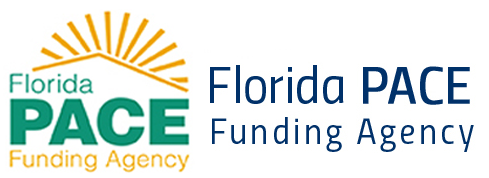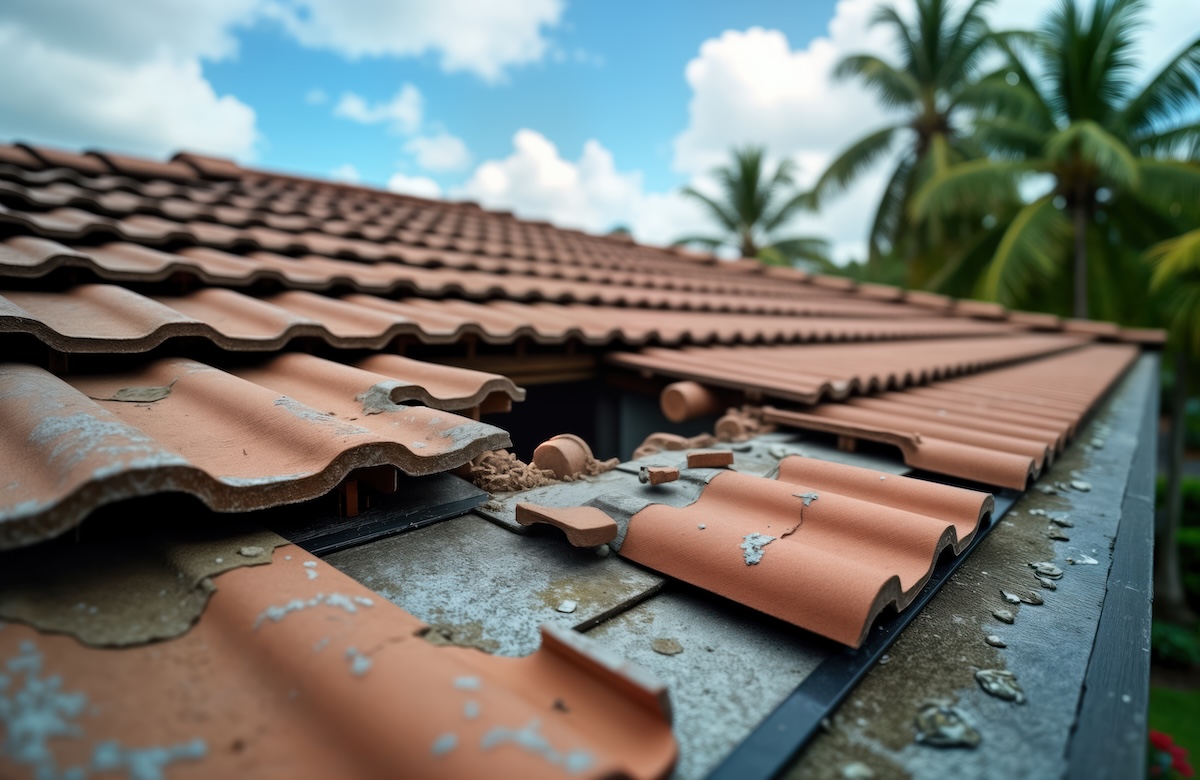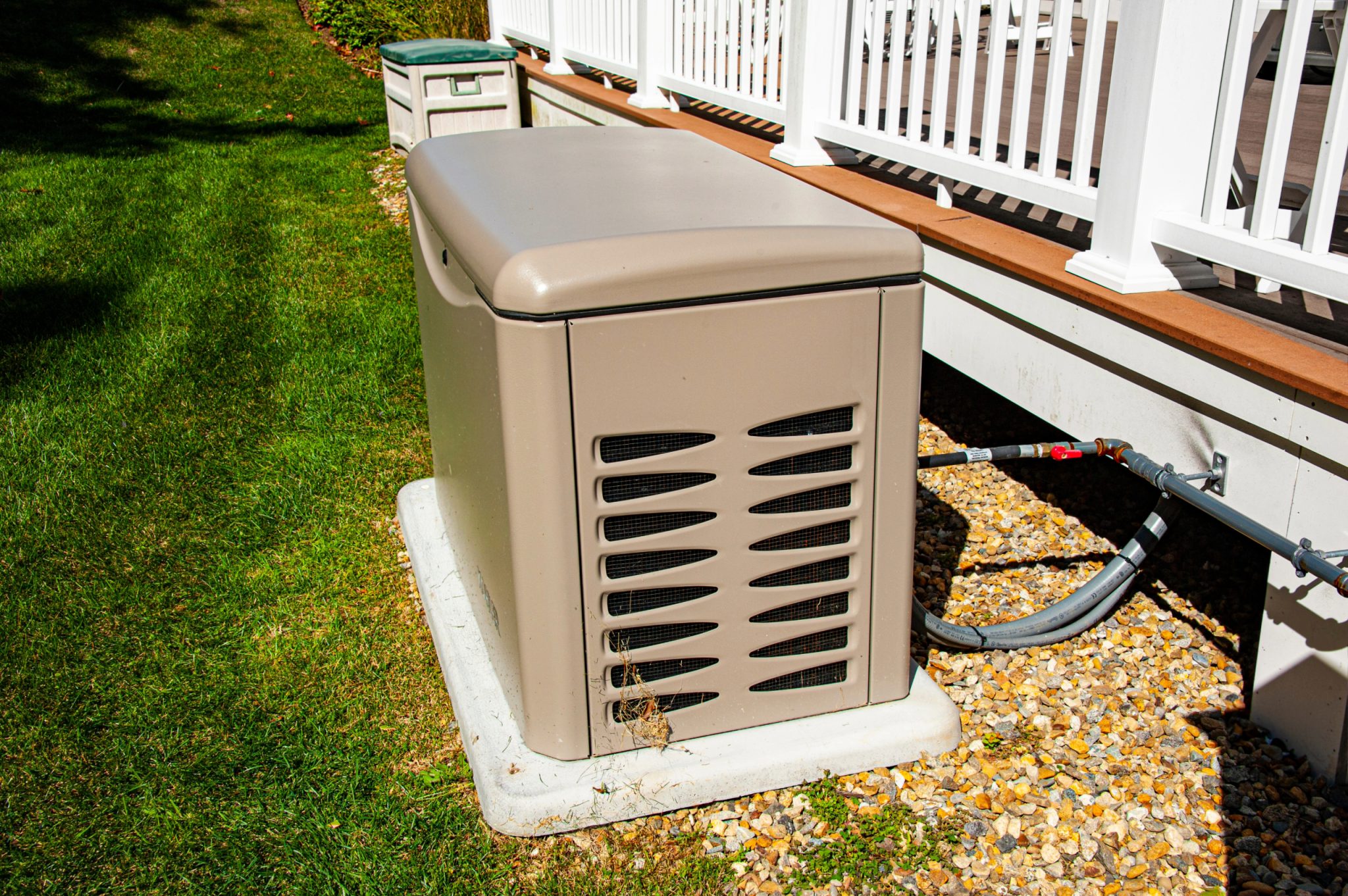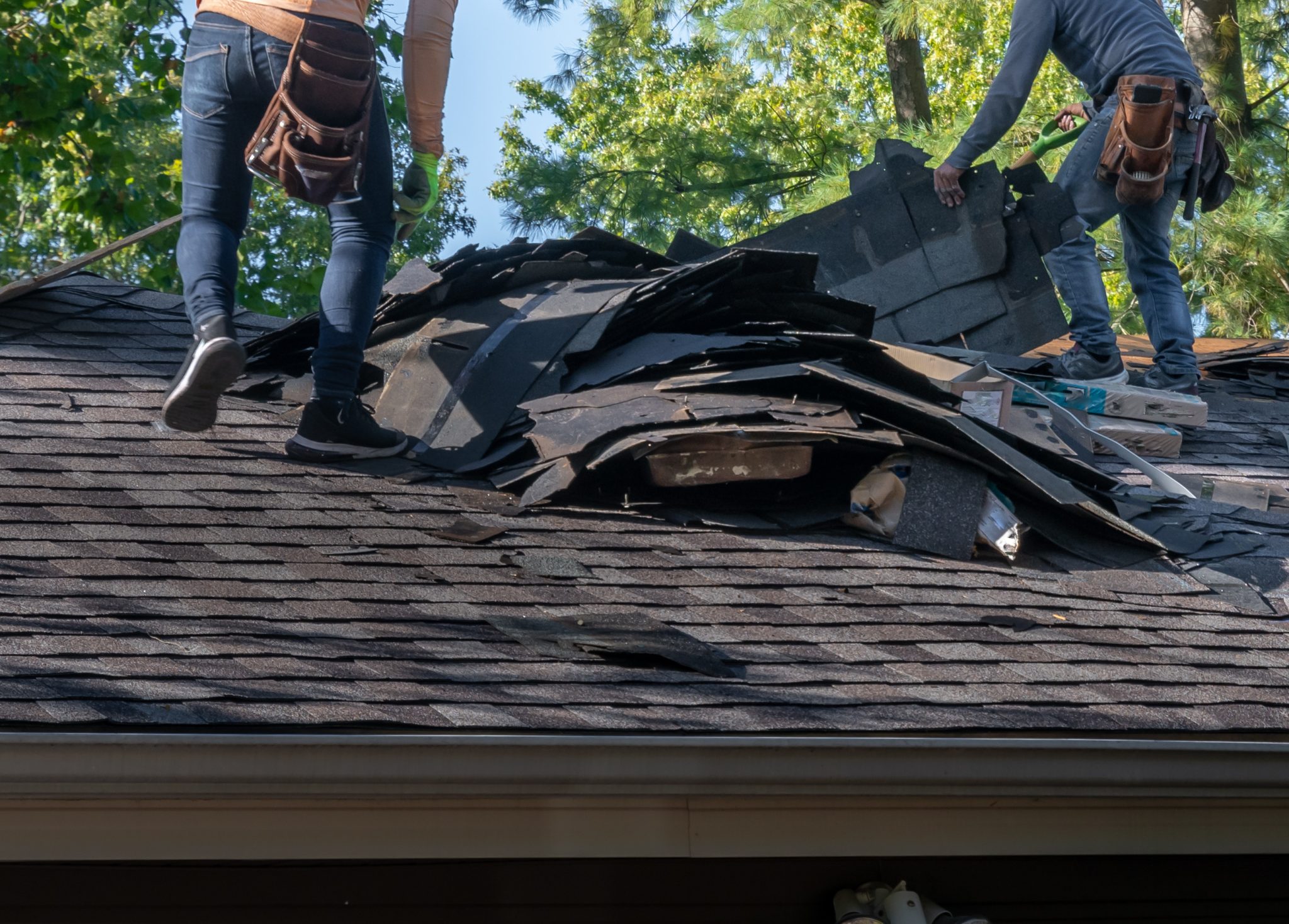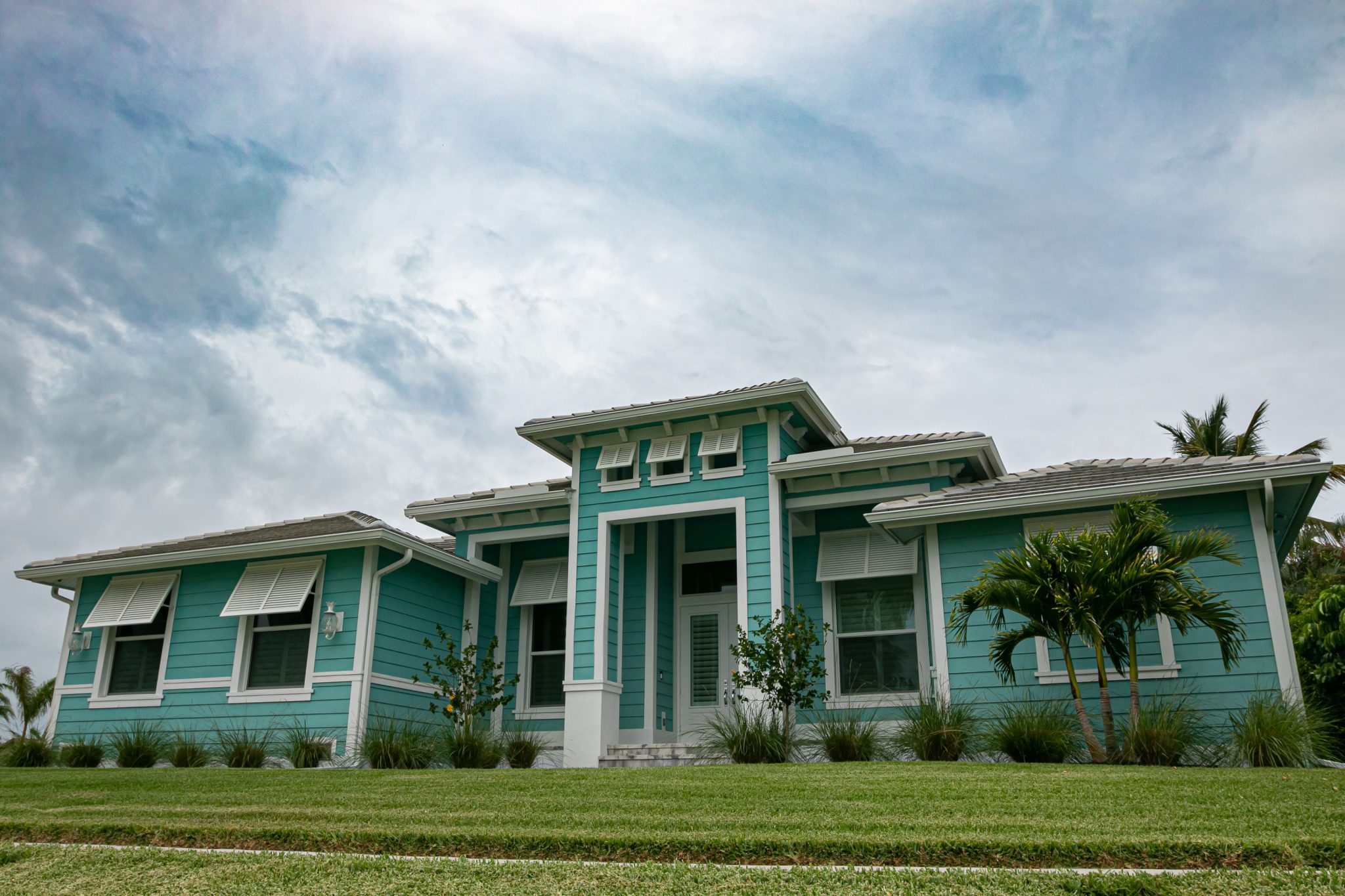
How to Protect Your Windows During Hurricane Season
When a hurricane is on the way, every minute counts, and your windows are one of the most vulnerable parts of your home. If they’re not properly secured, strong winds and flying debris can cause serious damage, not just to the glass but also to the inside of your home. Broken windows can lead to water damage, dangerous shifts in air pressure and even structural issues during a time when your focus should be on staying safe and riding the storm out.
The good news is that there are several reliable ways to protect your windows before a hurricane hits. Whether you’re planning ahead or making last-minute preparations, this guide covers the most effective solutions, from hurricane shutters and plywood to impact-resistant upgrades and more. We’ll also debunk a few myths (looking at you, window tape) and share straightforward safety tips every Florida homeowner should know.
Let’s break down what really works so you can feel confident, calm and ready for whatever hurricane season may hold.
Why Protecting Your Windows Matters
Windows might seem like just another part of your home’s exterior, but during a hurricane, they’re one of the first lines of defense. Without proper protection, a single broken window can compromise the safety of your entire home.
Flying debris carried by hurricane-force winds can shatter unprotected glass in seconds. Once a window is broken, wind and rain can rush inside, leading to serious water damage, mold growth and costly repairs. Even worse, sudden pressure changes caused by breached windows can lift your roof or blow out walls, putting your family at serious risk.
That’s why taking the time to secure your windows is critical for you and your family’s safety. Whether you’re upgrading your home’s resilience or getting ready for an approaching storm, reinforcing your windows helps keep your household safe, dry and structurally sound.
What To Do To Protect Your Windows During a Hurricane
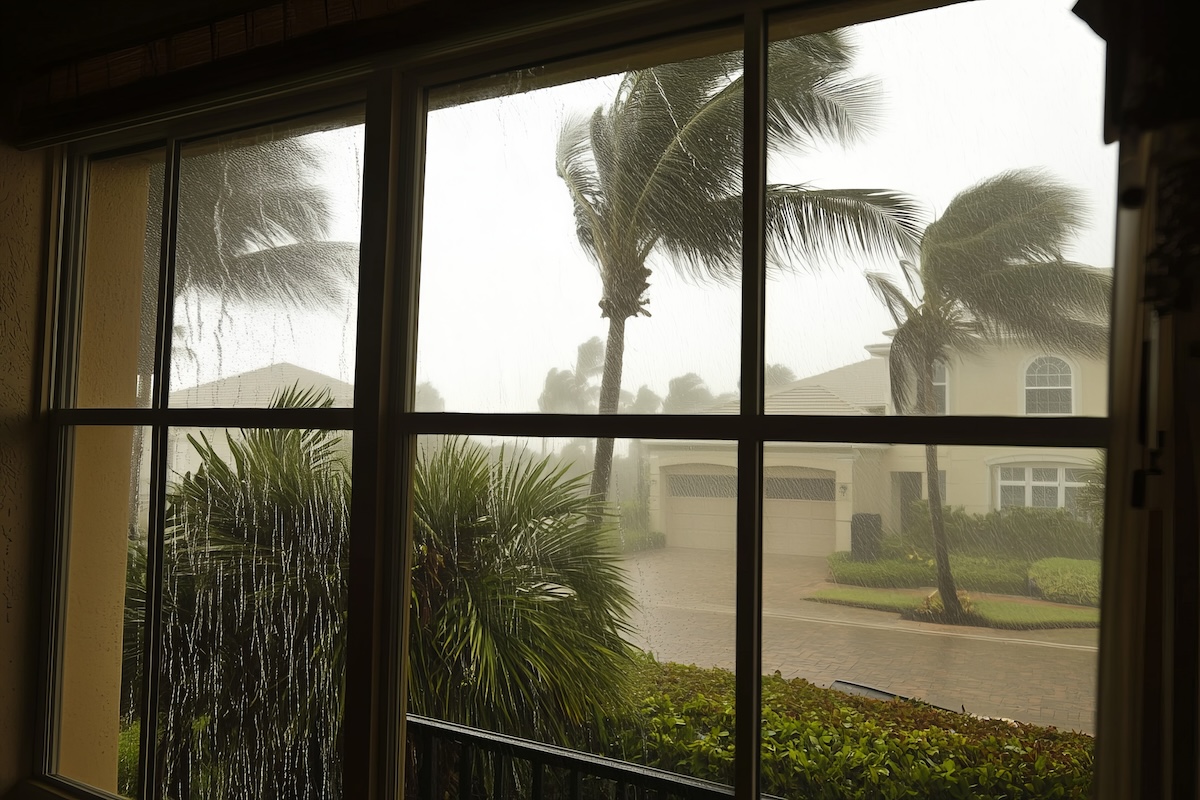
There’s no one-size-fits-all solution for window protection. What works best depends on your budget, your timeline and where in Florida you live. If you’re in a high-risk coastal area like Tampa, Miami or the Keys, you may need more permanent and robust protection, such as hurricane shutters or impact-resistant windows. Meanwhile, homeowners in inland or central parts of the state may opt for more temporary or budget-conscious solutions, especially if they’re not hit as often.
Whatever your location, preparing your windows before a storm hits is one of the most important things you can do to protect your home, prevent costly damage and keep your family safe. Below are the most effective methods to secure your windows during hurricane season.
Install Hurricane Shutters
If you live in a high-risk area, hurricane shutters offer some of the strongest and most reliable window protection available. They’re designed specifically for wind-borne debris and can meet or exceed Florida building code requirements, especially in regions where code enforcement is stricter, like South Florida.
There are several types of shutters, so you can choose the one that best fits your home and how often you plan to use them:
- Accordion Shutters: Permanently attached and easy to deploy, they’re ideal for year-round protection in coastal areas.
- Roll-Down Shutters: Often motorized, these offer quick, durable coverage and can double as security when storms aren’t in the forecast.
- Storm Panels: A cost-effective option you can install before a storm and remove afterward — popular in Central Florida and for second homes.
Use Plywood for Emergency Protection
For homeowners who don’t have shutters or are located in lower-risk areas, plywood is a tried-and-true way to protect your windows in a pinch. It’s especially common in inland regions where hurricane-strength winds may be less severe, but protection is still necessary.
To make the most of this method:
- Use 5/8-inch exterior-grade plywood for durability.
- Cut each sheet to extend at least four inches past each side of the window.
- Secure with heavy-duty screws or bolts directly into the wall studs, not just the trim.
Labeling and storing the plywood after the storm makes future prep easier. It’s not a long-term solution, but when done right, it’s effective.
Apply Hurricane Window Film
Hurricane window film is a clear layer applied directly to the glass. While it won’t stop debris from breaking through, it helps hold the glass together if it shatters, reducing the risk of sharp shards flying into your home.
Unlike tape, which doesn’t actually strengthen the window and can make breakage more dangerous, hurricane film is engineered to improve shatter resistance across the entire surface. It’s best used as a secondary layer of protection, not a standalone solution.
This option can be helpful for homeowners making phased upgrades or those in less storm-prone parts of the state, like inland or northern Florida.
Upgrade to Impact-Resistant Windows
Impact-resistant windows are the gold standard for storm protection. If you live in a region where hurricane threats are frequent, like South Florida or the Gulf Coast, these windows are more than just smart; they’re often required by code for new builds and remodels.
Built with laminated glass and a tough inner layer, these windows are designed to stay intact even when struck by debris at high speeds. Benefits include:
- Built-in hurricane protection — no shutters or boarding needed.
- Improved energy efficiency and noise reduction.
- Insurance discounts and long-term peace of mind.
Though the upfront cost is higher, many Florida homeowners fund this upgrade through programs like Florida PACE, which can help you get the improvements you need when you need them without relying on high-interest credit cards or going through a lengthy approval process. With no money down, no credit score requirements and fixed rates, Florida PACE can cover up to 100% of the cost of qualified impact-resistant window projects.
Secure Windows With Storm Bars or Braces
Storm bars, also called window braces, strengthen your windows by adding support across the frame. They’re less common than shutters or impact glass but can be a good option for larger windows or homes that were built before current building codes.
They’re often used in combination with other protections, like plywood or window film, and can help reduce the chance of breakage when winds pick up.
More Tips for Protecting Your Windows
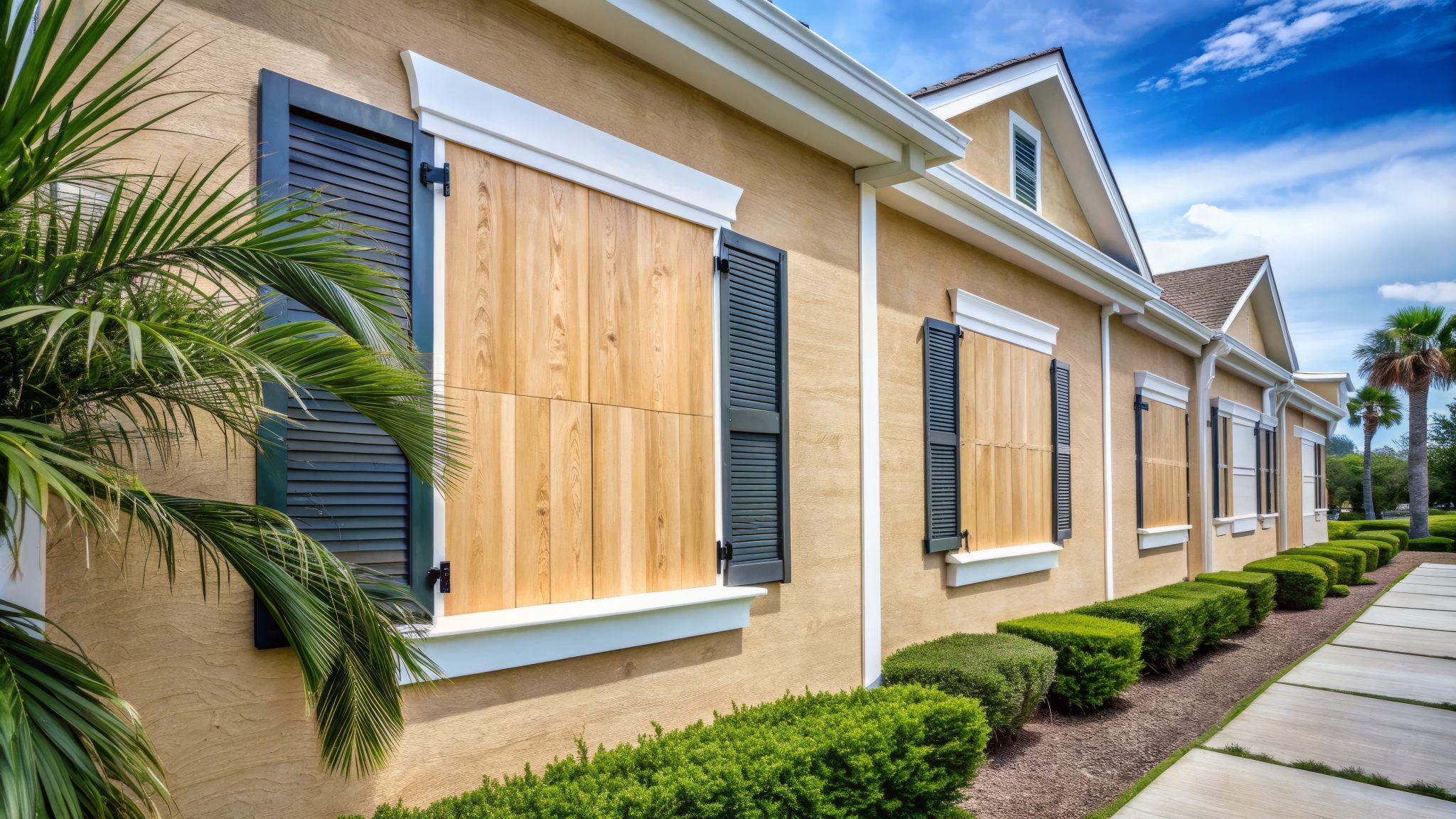
Shutters and impact windows are a strong first line of defense, but a few extra steps can make a big difference. These simple precautions help reduce the chances of storm damage and are easy to take care of as part of your hurricane prep.
Avoid Taping Your Windows
You’ve probably seen it before — people putting tape on their windows before a storm. It’s one of those hurricane prep habits that’s stuck around for decades, but it doesn’t actually work. Tape won’t stop the glass from breaking, and in some cases, it can cause bigger shards when it does. If you’re looking to protect your windows, there are far better ways to do it. Save yourself time and effort by skipping the tape.
Clear the Area of Loose Objects
One of the easiest things you can do before a storm hits is to walk around your yard and pick up anything that could fly around. Chairs, planters, toys, tools, etc. If it’s not bolted down, it’s a risk. These things can become airborne and break windows or cause other damage. Bring them inside or tie them down if you can’t move them.
Reinforce Window Frames and Seals
Even the strongest windows can fail if the frame is weak or worn down. Inspect your window frames and seals for any signs of cracks, dry rot or gaps. Apply fresh caulk or weather stripping where needed to block water and reduce wind pressure inside the home. Reinforcing these areas can help prevent leaks and keep your windows more secure during a storm.
Ensure Your Home Is Hurricane-Ready with Florida PACE
If you’re considering installing impact-resistant windows or other hurricane-hardening improvements, Florida PACE may be able to help. We provide funding for qualified upgrades like shutters, doors, roofing and more so you can strengthen your home before the next storm hits.
PACE isn’t a loan, though — it’s a program that allows you to fund eligible home upgrades and repay the cost over time through your property tax bill. With no money down, fixed rates and a clear repayment structure, it’s designed to help homeowners like you move forward with confidence, especially when the need is urgent.
Learn more about how it works and see if your project is eligible.
